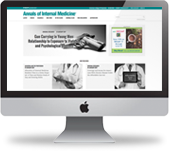Benefits of dedicated COVID-19 hospitals, ECMO; air sampling after aerosol-generating procedures
A health system reported outcomes at two hospitals created to treat only COVID-19. Another found that 42.9% of COVID-19 patients who got ECMO died, compared to 89.1% when it wasn't available. A sampling study compared viral particles in the air with different procedures.
Dedicating certain hospitals within a health system to COVID-19 care provided benefits, according to a study published by JAMA Network Open on March 3. The retrospective study compared outcomes of 5,504 COVID-19 patients treated at 11 hospitals in Minnesota, including at two hospitals created solely to care for patients with COVID-19 (2,077 patients). The mortality rate was 11.6% at the dedicated hospitals versus 8.0% at the other hospitals, but after risk adjustment, in-hospital mortality was significantly lower in the dedicated hospitals (unmatched odds ratio [OR], 0.75 [95% CI, 0.59 to 0.95]; propensity score-matched OR, 0.78 [95% CI, 0.58 to 0.99]). Use of some recommended therapeutics was higher in the dedicated hospitals, including deep venous thrombosis prophylaxis (83.9% vs. 56.9%), high-dose corticosteroids (56.1% vs. 22.2%), remdesivir (61.5% vs. 44.5%), and tocilizumab (7.9% vs. 2.0%). The study authors noted a number of limitations, including that they didn't compare the dedicated hospitals to COVID-19-focused wards, but they pointed out that treatment by high-volume centers has shown benefit in a number of conditions. “In the event of future outbreaks of viral pneumonia or other infectious diseases, we believe that the success of our model could provide a potential framework for large health care organizations looking to isolate patients with infections and provide the best care for these individuals,” the authors concluded.
The benefits of extracorporeal membrane oxygenation (ECMO) for COVID-19 patients with acute respiratory distress syndrome (ARDS) were analyzed by a study published Feb. 25 by the American Journal of Respiratory and Critical Care Medicine. It compared outcomes between patients who were transferred for ECMO (n=35) and those who were eligible for ECMO but could not be transferred to a facility that offered it due to health system capacity (n=55). Fifteen of the 35 ECMO patients (42.9%) versus 49 of the 55 patients who didn't receive it (89.1%) died before hospital discharge (adjusted hazard ratio, 0.23 [95% CI, 0.12 to 0.43]; P<0.001). Limitations include that the effects of ECMO could not be separated from the effects of receiving care at a specialized center. “The large difference in survival associated with the availability of health system capacity to provide ECMO at a specialized center in our study suggests that the benefit of ECMO for some patients with severe ARDS due to COVID-19 may be greater than previously understood,” the study authors wrote, adding that “the inability to provide ECMO to all eligible patients due to limited healthcare system resources may be causing potentially preventable deaths.”
The risk of airborne SARS-CoV-2 in a patient room did not increase with mechanical ventilation, high-flow nasal cannula, nebulizer treatment, or noninvasive ventilation, according to a small study published by Clinical Infectious Diseases on Feb. 28. Researchers collected 231 air samples from patient rooms, 10% of them positive for SARS-CoV-2. Virus in the air was positively associated with a low patient cycle threshold (Ct) value (OR for a Ct value <25 vs. >25, 5.0 [95% CI, 1.18 to 29.5]) and a shorter physical distance to the patient (OR for every meter closer to the patient, 2.0 [95% CI, 1.0 to 3.8]) and negatively associated with a mobile HEPA-filtration unit in the room (OR, 0.3 [95% CI, 0.12 to 0.98]). Of the studied aerosol-generating procedures (AGPs), there was an association toward positive air samples with positive expiratory pressure (PEP) training and a trend with airway manipulation, including bronchoscopies and in- and extubations. “Patients with a high viral load, during the first 1-2 weeks of disease, most likely constitute the highest risk, especially at short distance. Based on our results, this applies irrespectively of any ongoing AGP, with the exception of airway manipulation and PEP training,” the authors said.



